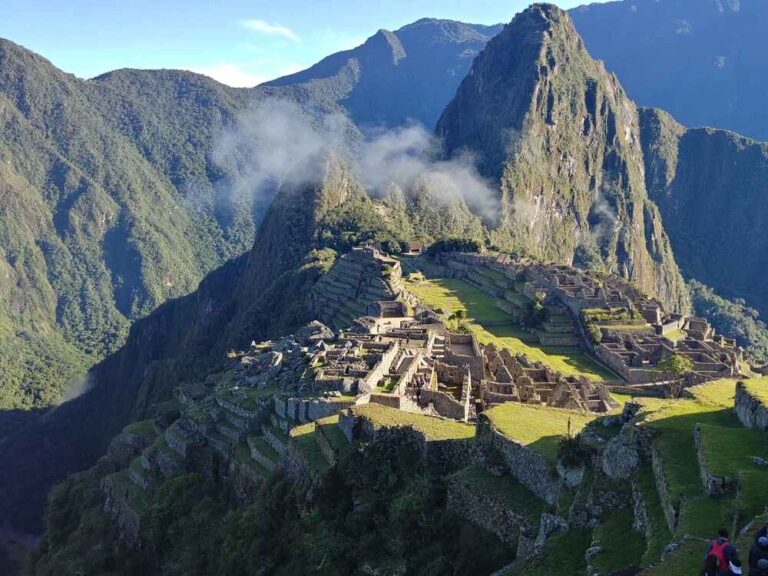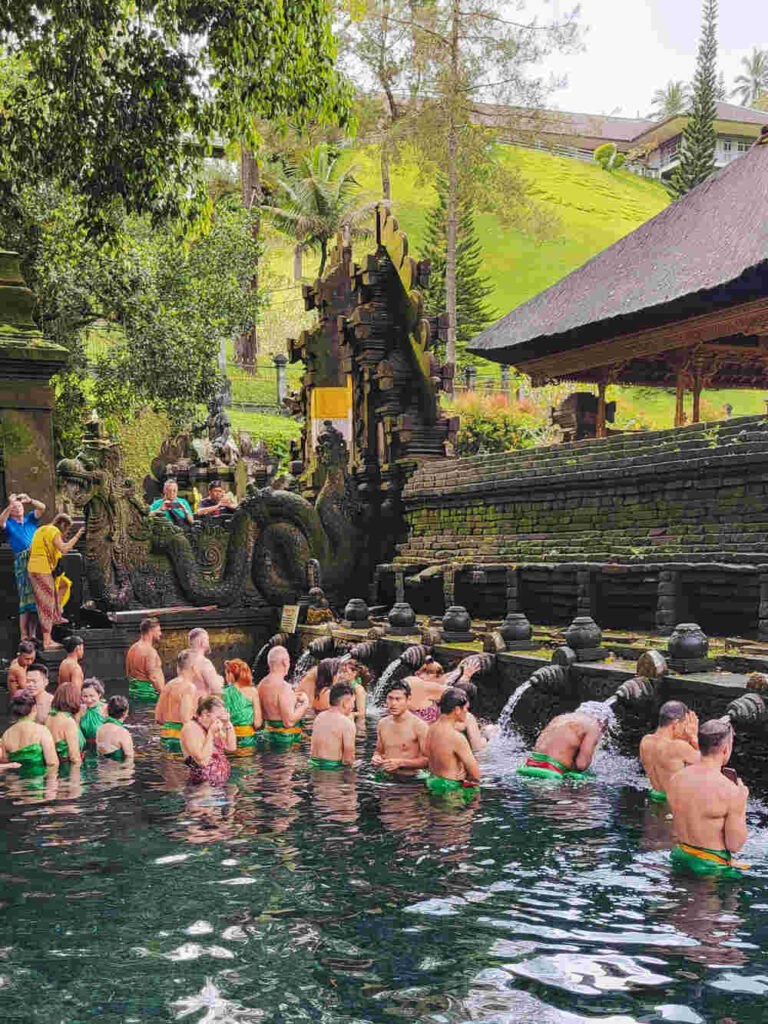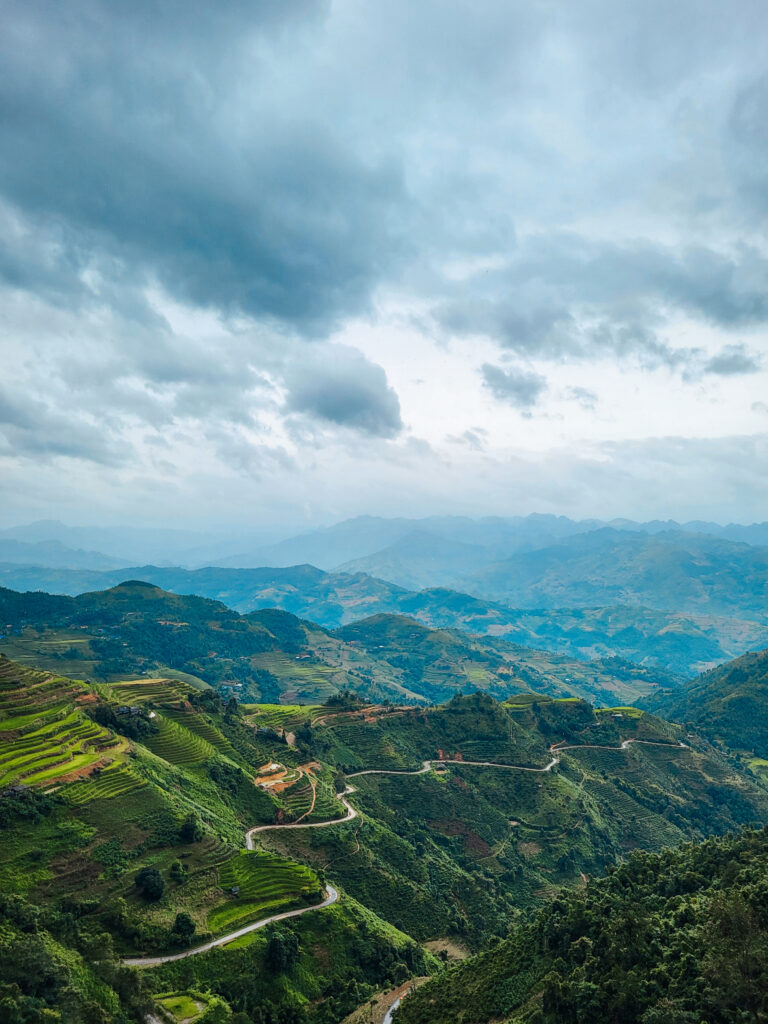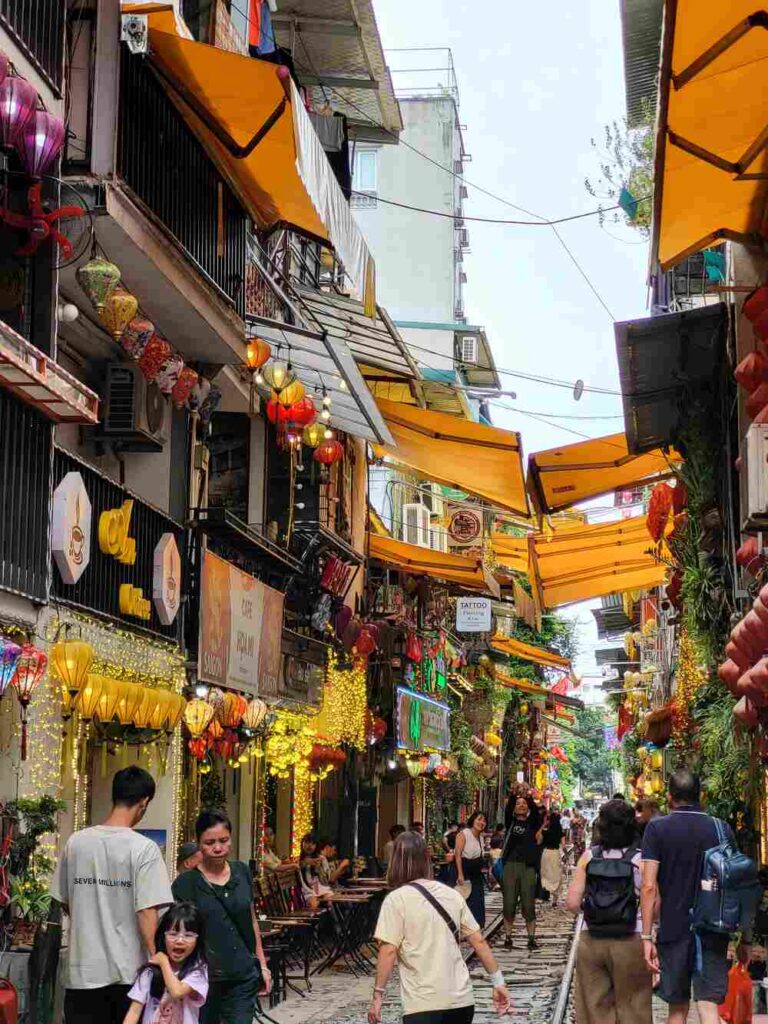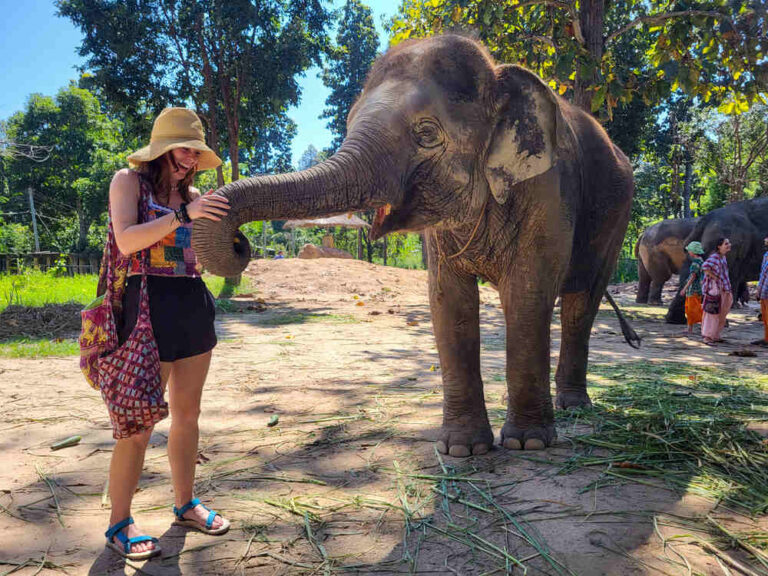Vietnam is an amazing budget-friendly destination, so let me share my Vietnam travel budget breakdown!
I spent about a month in Vietnam, traveling the northern half of the country, and I fell in love. It’s filled with so much authenticity from the people, the untouched scenery with an emphasis on culture and language that makes the country so proud. The major cities and quiet villages always have something unique and amazing to offer to travelers.

I spent a full month exploring the country in September 2024, living the low-budget backpacker life, but not without a few epic splurges along the way.
Vietnam was a happy place for my wallet. Good deals were easy to find, and I was able to be a little more luxurious than normal. However, I am a budget backpacker at heart, so I still found a way to travel as cheaply as I could, looking for the best value for my money.
Vietnam makes travel effortless with accessible transit, an abundance of hostels and hotels, their hospitality, and their affordability!
In this post, I’ll break down the cost of traveling in Vietnam for all types of travelers, along with my Vietnam trip cost, and share my favorite tips for budgeting smart while on the move.
Vietnamese Dong conversion
$1 USD = ₫ 25869.94
$1 CAD = ₫ 18690.05
€1 EURO = ₫ 29417.73
£1 pound= ₫ 34313.68
$1 AUS = ₫ 16523.43
$1 NZ = ₫ 15360.96
There are three budgets for Vietnam that depend on travel style:
Budget travelers
$15-30/day
$100-250/week
$500-1000/month
Mid-rang travelers
$30-60/day
$250-420/week
$1000-2000/month
Luxury travelers
$60-150/day
$420-1000/month
$3000+/month
Breakdown on travel budgets – Who are you?
Knowing what kind of traveler or experience you want is important to better understand how to budget your trip. Here is a breakdown of the three general travel spending types.
Budget traveler
A budget traveler is someone who explores the world while keeping costs as low as possible, without sacrificing the experience.
In Vietnam, this means living like a local and spending wisely. A budget traveler will prefer street food for just a few dollars, stay in hostels or with local families through homestays, and get around using affordable public transportation like buses or motorbike rentals. Shopping at local markets for snacks, souvenirs, or even fresh produce is another great way to keep daily expenses low.
On average, a budget traveler in Vietnam can expect to spend around $15-$30 USD per day, depending on location and travel style.
Mid-range travelers
A mid-range traveler describes those who prioritize comfort and convenience without going overboard on luxury. Meaning, it’s for those who want a bit more privacy and ease, while still being mindful of their budget.
In Vietnam, a mid-range traveler typically stays in mid-range hotel rooms, which often include air conditioning, private bathrooms, and sometimes even a pool or breakfast buffet for a reasonable price.
When it comes to food, mid-range travelers dine at local restaurants where meals are delicious and a step up from street food. Exploring local markets is still part of the experience to sample regional specialties and explore the everyday culture.
The daily budget for a mid-range traveler in Vietnam usually falls between $30-$60 USD, depending on the city and the travel pace.
Luxury traveler
A luxury traveler prioritizes the finest experiences, comfort, and personalized service. They prize quality over cost, often staying in premium accommodations and opt for curated experiences to make their trip as seamless and indulgent as possible.
In Vietnam, luxury travelers typically stay in 5-star resorts or luxury hotels, which often offer amenities like spa services, rooftop pools, oceanfront views, fine dining, and concierge assistance. Itineraries usually include private tours, providing more exclusive access to cultural sites, local guides, and experiences without the crowds.
While luxury travelers may still enjoy authentic local culture, they do so in style, whether through fine dining, premium transport options, or personalized adventures. The daily budget for a luxury traveler in Vietnam generally ranges from $60-$150+ per day, depending on the level of extravagance and destination.

Average Vietnam cost breakdown
I want to start with sharing the average cost of everything in Vietnam, from a night’s stay to food. Along with popular additional item prices like tours and activities!
Accommodation
The backpacking culture in Southeast Asia is huge and there are many places to accommodate that. Accommodation prices do change depending on the city and season, but here is an average range to expect for accommodation:
Hostel dorms – ₫ 130,000 – ₫ 260, 000 VND per night ($5-$10 USD)
Hostel private rooms – ₫ 520,000 – ₫ 775,000 VND per night ($20 – $30 USD)
Budget hotels – ₫ 400,000 VND per night ($15 USD)
Airbnb private rooms – ₫ 520,000 – ₫ 1,000,000 VND per night ( $20-$40 USD)
Airbnb apartments – ₫ 1,300,000 – ₫ 2,600,000 VND per night ($50 – $100 USD)
Vietnamese food
One of the absolute highlights of traveling through Vietnam is, without a doubt, the delicious food. You can eat well here without spending much at all.
*Note: these prices are rounded up.
Most street food – ₫ 20,000VND ($1 USD)
Traditional restaurants – ₫ 45,000-95,000 VND ($2.40 – $5 USD)
Western restaurants – ₫ 110,000-250,000 VND ($6 – $14 USD)
Beer – ₫ 20,000-35,000VND ($1 – $2 USD)
Bottled water – ₫ 15,000 VND ($0.50 USD)
Groceries for a week – ₫ 400,000 VND ($16 USD)
Vietnamese special dishes include Banh Mi and noodle soup. Make sure to give it a try!
Vietnam tours
Additional costs to your budget will always be tours and day excursions. Vietnam has a whole variety of unique experiences that are 100% worth the extra money and can only be done in Vietnam! I have included a list of Vietnam’s most famous tours and the price ranges for them:
Tours range in price depending on location, popularity, tour length, etc.
List of popular tours:
Cu Chi tunnels tour (HCM city) = ₫ 386,200 ($15 USD)
Ha Giang Loop tour (Ha Giang) = ₫ 5,950,000 ($220 USD)
The Duck Stop (Phong Nha) = ₫ 100,000 ($3 USD)
Halong Bay day cruise = ₫ 1,100,000 ($45 USD)
Sapa Hiking tour = ₫ 686,000 ($27)
Elephant cave and jungle trek = ₫ 2,947,000 ($110 USD)
My Vietnam travel cost
I know for a fact I fall under the budget travel backpacker category. I enjoy stuffing my life in a bag and sleeping on buses to save the extra $10.

But travel (and life) is all about balance. The money I save by skipping fancy hotels and taking the long, cheap route often goes toward unforgettable experiences and things that truly make a trip memorable. That was especially true in Vietnam.
Every city I visited had something incredible to offer: rich history, jaw-dropping natural scenery, massive caves, misty mountains… the kind of stuff that makes you feel like you’ve earned the right to say, “Yeah, I’ve really seen Vietnam.”
Below is a weekly breakdown of what I spent, from cheap eats to big adventures, to give you an idea of what traveling Vietnam on a tight budget really looks like.
Week 1 total (Hanoi – Ha Giang): $423.45 CAD
- 2 nights at a hostel in Hanoi
- Ha Giang loop tour: $313
Week 2 total (Hanoi – Ninh Binh): $181.24 CAD
- Accommodation: $53.39
- Transportation: $60.33
- Food: $29.31
- Activities: $26.31
- Mua Cave
- Bike rentals
- Trang An boat tour
Week 3 total (Phong Nha – Hoi An): $226.56 CAD
- Accommodation: $38.96
- Transportation: $53.03
- Food: $50.58
- Activities & Shopping: $84
- The Duck Stop
- Dark Cave Tour
- Coffee Making
- Lamp boat ride
Week 4 total (Da Nang): $108.19 CAD
I spent most of my time in Da Nang on the beach, swimming at tanning!
- Accommodation: $33.51 CAD
- Transportation: $14.68 CAD
- Food: $60 CAD
Months total: $939.44 CAD
Vietnam peak seasons
Like many tourist-heavy countries, the prices for most things, like accommodation, food, and transportation, rise a bit during the peak seasons, between mid-December to March and July to September.
Money-saving tips
Travel at night
Traveling at night often means hopping on an overnight plane, bus, or train, doubling your transportation into a makeshift sleeping area. It’s a smart way to save both time and money, since you’re covering distance and skipping the cost of a night’s accommodation in one go.
Book tours locally
I often use apps and websites to find tours and ideas of activities to do, but I found that there were local travel agencies everywhere in Vietnam, and almost every hostel/hotel had connections to them. Booking through the hostels and agencies was more convenient (if you don’t book ahead) and cheaper.
Street food and local restaurants
The street food in Vietnam is absolutely delicious and incredibly cheap. For the best and safest experience, pick a stall where you can see your food being cooked fresh right in front of you. Watching it all come together adds to the experience!
Bring a reusable water bottle
Many hotels and hostels in Vietnam offer drinkable water refill stations, which can be an absolute lifesaver in the heat. Bottled water is cheap and easy to find, but those costs can add up quickly over time. Refilling your bottle not only saves you money, but it’s also a simple way to cut down on plastic waste and travel a little more sustainably.
Bargain
Bargaining is a normal part of daily life in many parts of Asia, and as a traveler, you’ll often be quoted higher prices at first. Don’t be afraid to join the game, negotiating can be fun! Just keep in mind that even if you don’t haggle the price down much, you’re likely still getting a great deal.
Note: Vietnam is a beautiful, hospitable place, but the locals live and work all their lives for the money they receive. I love a good bargain, but sometimes it means the difference between a meal and not, so be smart and remember to be kind when you can. We are all sharing this world, so let’s make it livable for all.
Buy a physical SIM card
Physical SIM cards might not always be the most convenient option, but they’re almost always the cheapest way to stay connected while traveling. Since they’re sold locally, they typically come with better coverage and more affordable data plans than international options.
Just make sure to buy from a reputable store, like an official carrier shop. In Vietnam, for example, Viettel is the largest mobile provider and a solid choice for reliable service.
What to do and where to stay in Vietnam
When it comes to traveling in Vietnam, having a rough itinerary in mind can make a big difference for not just in saving money, but in making the most of your time and experiences.
Vietnam is long and narrow, with major highlights spread out from north to south. Without a plan, it’s easy to waste time backtracking or overspending on last-minute transport. With a bit of strategy, you can move through the country efficiently and affordably.
Some regions, like northern Vietnam, are known for their affordability, stunning nature, or abundance of free or low-cost activities, ideal for travelers trying to stretch their budget.
Cities like Hanoi and Ho Chi Minh City offer cheap food, awesome street life, and a range of budget accommodations. Meanwhile, rural areas like Phong Nha, Ha Giang, or the Mekong Delta deliver unforgettable adventures at a fraction of the cost you’d pay anywhere else in the world.
By knowing what each region has to offer and how it fits into your travel style, you can prioritize destinations that not only match your interests but also help you avoid unnecessary spending.
Whether you’re into nature, food, culture, or adventure, there’s something for every kind of traveler and budget.
Here is my recommended list of where to go and how long to stay:
Hanoi: 3 nights
Sapa: 2 nights
Ha Giang: 4-day tour
Ha Long Bay or Cat Ba: 1-day tour
Ninh Binh: 2 nights
Phong Nha: 2 nights
Da Nang: 2 nights
Hoi An: 3 nights
Da Lat: 2 nights
Saigon: 3 nights
How to stay safe in Vietnam
Budget travel does not mean you need to sacrifice safety. I found Vietnam to be extremely safe in regards to local interactions, food, and accommodation. With that said, there is always a way to remain safe, and I follow everywhere I go:
Keep your valuables secure
Petty theft happens everywhere. Keep a lock accessible for hostels and hotels. Lock up your bag when you can, have a money belt under your clothing and keep your phone close by!
Be cautious in traffic
Traffic in Vietnam can be intense, especially in cities like Hanoi and Ho Chi Minh City. The scooters are endless so crossing the road for the first time is definitely intimidating. Vietnamese street crossings are kind of infamous for being chaotic and terrifying.
Here’s the trick: walk slowly, steadily, and with purpose. Don’t run, don’t stop abruptly, just maintain a consistent pace so that drivers can anticipate your movements and adjust accordingly. It might feel counterintuitive, but the traffic will flow around you. Confidence is key (even if you’re faking it at first).
Respect local customs
Dress modestly when visiting temples and sacred sites, and always remove your shoes when entering someone’s home or certain shops. Learn some local Vietnamese words and phrases to show your respect and appreciation.
Watch the weather
I ignored this step, and I got stuck in one of the worst typhoons to hit Vietnam in years.
Vietnam’s weather varies by region and season.
So make sure to look at Vietnam seasons when you plan to travel, and plan your activities to accommodate safe travel within and between cities. Check the forecast, especially during rainy season, to avoid flash floods or travel disruptions.
Booking References
These are some of my favorite companies I use and reference when traveling. They are easy to use, helpful, and have great prices. As a budget backpacker, I consistently fall back to these companies for competitive pricing and budgeting.
Booking.com – They consistently have the cheapest accommodation in every country. Whether it be hostels, homestays or hostels, it is good to check out booking for competing prices.
HostelWorld – The largest selection of hostels in any given area, along with the easiest search and rating system. They also have a chat feature allowing travelers in your booked areas to connect, which is super helpful for finding friends!
Agoda – This is also a great app for finding great hotel options and prices in Asia.
12GoAsia – Book door-to-door travel. They look up the best deals for transportation, including flights, trains, boats, and car rides for you to compare and choose from.
Skyscanner – Find the cheapest flights to anywhere by comparing flight deals from numerous companies.
Get Your Guide – This is a great app for finding interesting attractions in any area. It is a huge marketplace for a range of tours and activities from hiking to coffee-making classes.
Airalo – The easiest and biggest variety of eSIMs around the world. If you want to go without the hassle of finding physical SIMs, this is the best option to go with.
Visitors Coverage Travel insurance – Travel Insurance is important! Make sure you’re covered wherever you go.
Final Thoughts
Vietnam is full of vibrant culture, with amazing scenery, packed with stuff to do, and warm, welcoming people. It’s one of the best places in the world to experience all of that without blowing your budget too. Go in with an open mind, a bit of street smarts, and a sense of adventure, and you’re guaranteed an incredible trip.
Other Vietnam-Related Posts
- Basic Vietnamese words and Phrases to learn for your Trip to Vietnam
- Vietnam Travel Guide: A Complete City-by-City Guide 2025
- The Most Amazing Experience Making Vietnamese Coffee Recipes
- Vietnam’s Ha Giang Loop: The Ultimate Motorbike Adventure
- Discover the duck stop: A Unique Experience in Vietnam
- Beautiful Places to go to in Vietnam: Ninh Binh
- A Unique Vietnam Experience in Phong Nha: The Dark Cave Tour

